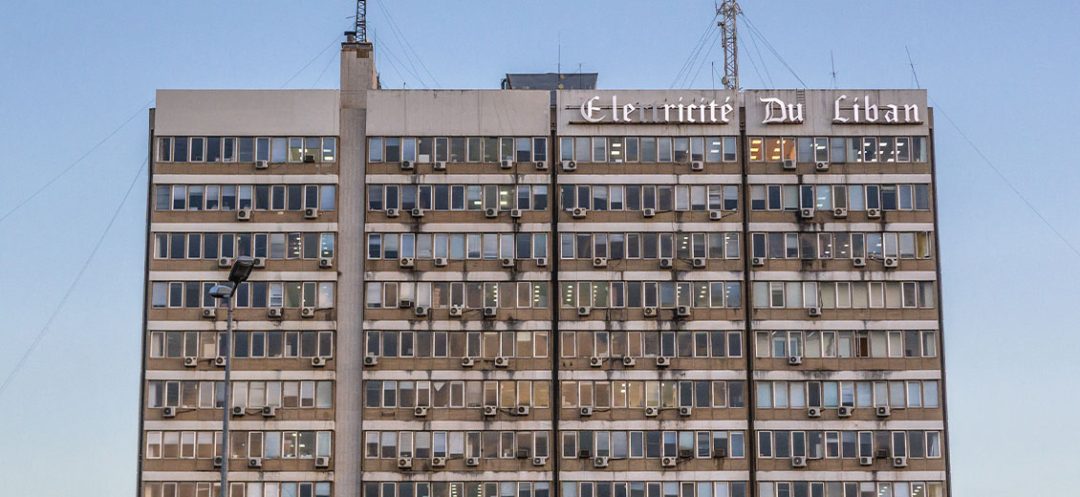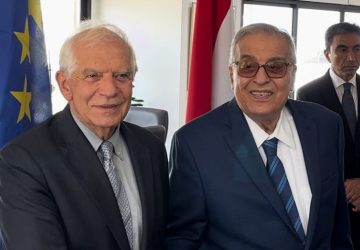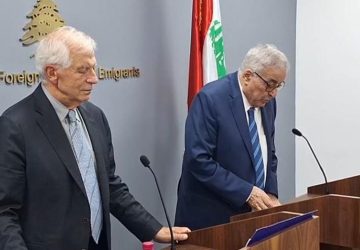Listen to the article
After hours of complete darkness in Lebanon, signs of hope are emerging as a five-step plan is set into motion. Essential facilities are gradually being resupplied with electricity, but it will take several more days before citizens can once again enjoy their sacrosanct four hours of daily power.
On Saturday afternoon, following the complete shutdown of the Zahrani power plant—the last remaining operational facility—Lebanon was plunged into total darkness for several hours. This blackout caused a halt in electricity supply to vital infrastructure, including the airport, port, water pumps and sewage systems.
In response to the crisis, caretaker Minister of Energy Walid Fayad launched a comprehensive five-step plan to be implemented over a month, aimed at increasing the public grid’s capacity to over 800 megawatts. The first step involved securing a loan to purchase fuel from Lebanon’s oil reserves and transport it to the Zahrani power plant.
As a result, one of the units at the Zahrani power plant has been reactivated following the delivery of 5,000 kiloliters of diesel from local reserves. This has enabled the generation of 150 megawatts and a partial restoration of electricity to vital infrastructure. However, this measure will not immediately restore power to citizens, as it is focused on supplying essential State facilities, including the port, major water pumps and the airport.
The second step, currently underway, involves adding 100 megawatts from the Litani Authority’s hydroelectric plants to the public grid, increasing the total capacity to 300 megawatts. However, this enhancement will be temporary, as the “borrowed” fuel reserves from the oil facilities are expected to be depleted by August 25.
Fayad states that starting August 26, “the third phase is set to begin with the arrival of the ship Helen from Egypt, which will deliver 30,000 tons of diesel. This will allow the Zahrani and Deir Ammar power plants to reach a production capacity of nearly 600 megawatts, restoring electricity supply to citizens.”
However, to ensure the plan’s continuity, the Ministry of Energy and Water must issue a tender for the procurement of fuel for Electricité du Liban (EDL) and secure the $25.557 million needed for this purchase, to be obtained from electricity bill collections.
On August 16, Fayad requested the Central Bank to open a letter of credit in favor of Sahara Energy to cover the transportation costs of the diesel being shipped on the tanker Helen.
From September 6 to 30, the fourth phase of the plan will be launched. During this period, “60,000 tons of fuel, in line with the agreement with Iraq, will be delivered to Lebanon.”
The fifth phase will involve continuing the supply of Iraqi fuel and operating the inverter engines at the Zouk and Jiyeh power plants by Middle East Power (MEP). This phase is set to increase energy production capacity by 200 megawatts, elevating the total network capacity to over 800 megawatts.
Immediate Algerian Assistance
Additionally, Algeria has committed to providing fuel supplies to EDL. In a phone call with caretaker Prime Minister Najib Mikati, Algerian Prime Minister Nadir Larbawi affirmed “his country’s readiness to deliver immediate oil assistance to Lebanon to help address its electricity sector challenges.”
In this context, caretaker Minister of Foreign Affairs Abdallah Bou Habib met with Algerian Ambassador to Lebanon Rachid Belbaki on Monday. The ambassador reaffirmed Algeria’s unwavering support for Lebanon, highlighting that President Tebboune’s decision to supply fuel is a natural response to the country’s exceptional challenges.
It is important to note that EDL announced on Saturday that its power plants would halt electricity production due to the complete depletion of diesel reserves. This occurred despite preventive measures implemented since July 27 and multiple warnings from the public supplier. The measures were intended to conserve fuel reserves and ensure the continued supply of electricity for as long as possible to citizens and vital infrastructure, including the airport, port, water pumps and sewage systems.





